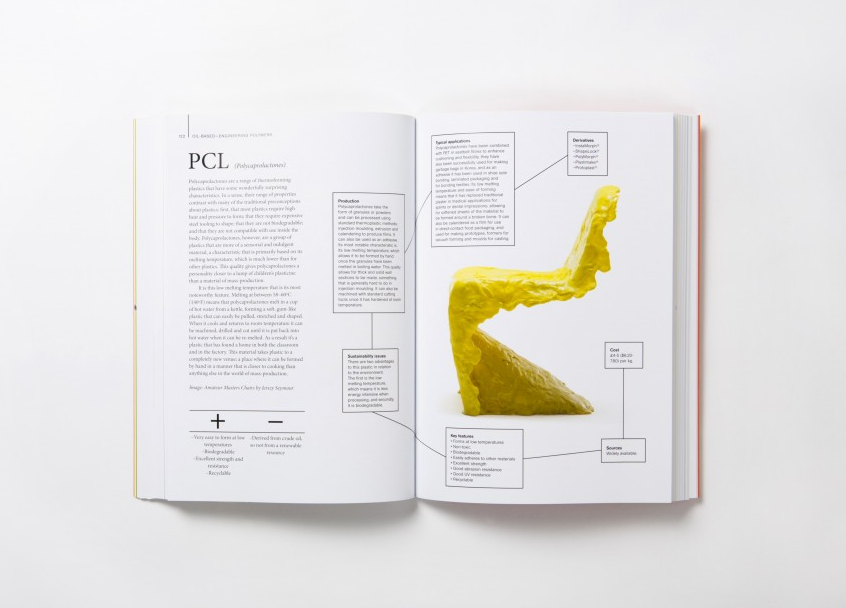ON OUR BOOKSHELF: The 7 Best Design Books For Inspiration and Ideation
From physics to conceptual design, understanding material uses to finished products, we scour our bookshelves and the Internet for infinite inspiration. While there is nothing really new anymore, we strive to push ourselves to create a new feeling. But before we can, we have to understand what past and present product design makes us feel. Below is a list of our favorite reads currently on our bookshelf.
“Our work is anti-disciplinary. And the outcome can be anything that contributes to society.”
One of our favorite books include the 2004 edition of Simply Droog 10+3 Years cataloging the history of Droog's creations since its founding in 1993. It follows all of their designs, exhibitions, projects, and publications, all while capturing the "We're weird, we know it, we like it. And so do you" mentality we've always admired in the conceptual design house. It's delicious book design makes it easy to devour, immersing you in the exploding ideas that have come out of Droog but the quick essays interspersed throughout the book make it a thoroughly enjoyable read--not a school assignment.
“Sometimes, the simplest ideas are the best.”
Spoon is another book we've spent hours poring over. It covers 100 designers who have emerged on the scene within the past 5 years, all chosen by 10 renowned design critics and other internationally acclaimed designers. It's a diverse exploration of recent design products, covering everything from furniture and lighting to tools and machinery. The stunning photos make it a great pick for a coffee table perusal, but the concise descriptions and inclusion of first and second-draft sketches make Spoon a nicely bound package and source of inspiration.
“[C]hairs, like clothes, are closely related to the human skeleton and the movement of the human body.”
1000 Chairs by Taschen presents, well, 1,000 chairs. It's the most comprehensive survey of chair design of the 20th century, reflecting all the major designers and styles we've come to recognize--and some we haven't. We like this one because of its focus on a single item; it's a full exploration of the chair, which forces you to take notice of the minute details most people (read: not designers) don't see. From the classic and beloved Eames to Archizoom Associati's 'Safari,' 1000 Chairs has got you covered.
“It’s a book not a blog, it has to be right.”
15 Dangerously Mad Projects for the Evil Genius by Simon Monk isn't your typical design-related book. But it is one of our favorites.
You can actually build them without being trained as an engineer. Even though there are only 15 projects, Monk provides you with enough theory that you can adapt each project and create your own modifications, so the possibilities are practically endless. There are more details and scientific principles you can peruse on the dangerously mad website (which, yes, looks like it belongs in 2001, but actually covers quite a few new technological advancements--surprisingly).
Because of the thorough information--Monk is very well-informed and knows how to explain difficult concepts in laymen's terms--we are able to translate much of the information into our own product design ideas. And even if nothing comes from the ideation sessions, who doesn't want to play with a ping-pong gun or build a levitation machine?
“If you are ever stuck for inspiration, ask your materials for advice.”
Chris Lefteri's Materials for Design provides a great overview of materials, their applications, examples of their uses, and even rough costs. It's very easy to digest as the design-heavy layout provides manageable bits of information so you're not left feeling overwhelmed. With a focus on raw materials (as opposed to semi-formed sold as a sheet, rod, etc), Lefteri provides you with the knowledge to understand the capabilities of anything from algae to PCL.
Materials for Design is a phenomenal jumping off point if you're looking into experimenting with new materials. It might just be number one on our required reading list. And if you're looking to explore other topics relating to material capabilities, follow Lefteri's Hello Materials blog.
“I like to push the boundaries of what a material can do—and eventually become. ”
Last, but not least (not in our book), is our sketchbooks. We have entire shelves of Moleskins filled with notes, sketches, to-do lists, and doodles. Our ideas spring from other ideas, but the power of a blank page helps our ideas turn into concepts, and, in turn, those concepts into products.







